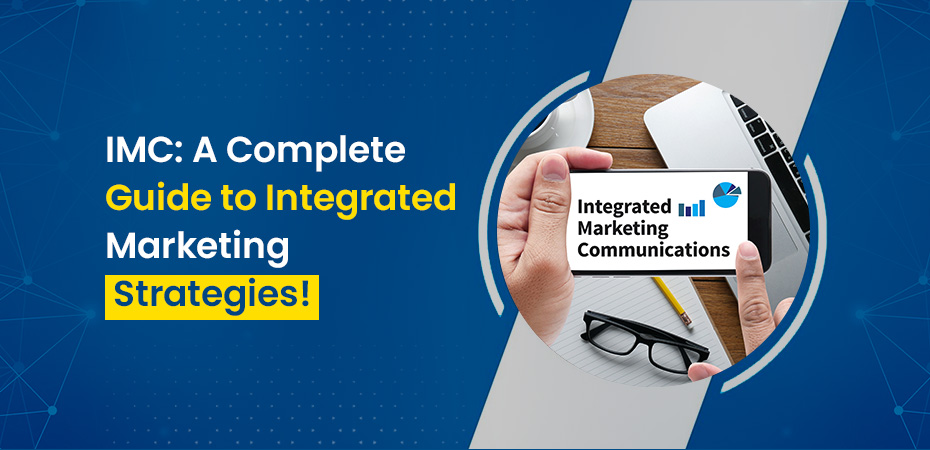IMC A Complete Guide to Integrated Marketing Strategies



Ever wondered how successful brands deliver a consistent message across all their marketing channels? The answer lies in Integrated Marketing Communications (IMC).
IMC means a marketing strategy that brings all communication together to send a clear and strong brand message. It’s like an orchestra where different instruments (marketing channels) work together to make great music (a unified brand message).
Here’s what makes IMC essential in today’s marketing landscape:
- Creates seamless customer experiences across all touchpoints
- Maximizes marketing budget efficiency
- Strengthens brand recognition and recall
- Drives higher conversion rates through consistent messaging
In this comprehensive guide, we’ll explore:
- The fundamental concepts of IMC in marketing
- How it shapes modern marketing strategies
- Real-world examples from successful brands
- Practical steps to develop your own IMC strategy
- Methods to measure and optimize your campaigns
Ready to discover how IMC can transform your marketing efforts? Let’s dive in and unlock the power of integrated marketing communications.
Integrated Marketing Communications- Definition and Key Components
In marketing, Integrated Marketing Communications (IMC) is a strategy that unites all of a company’s marketing tools and resources.
IMC stands for Integrated Marketing Communications. It helps create a big impact on customers. IMC also ensures a consistent experience for them. It’s like an orchestra, where each instrument plays its part, but when combined, they make great music.
Key Components of IMC:
- Message Consistency: Creating unified brand messaging across all platforms
- Channel Integration: Coordinating various marketing channels to work together
- Strategic Marketing Planning: Developing comprehensive campaigns with clear objectives
- Customer-Centric Approach: Focusing on customer needs and preferences
- Data-Driven Decision Making: Using analytics to optimize marketing efforts
Evolution of IMC
IMC has evolved significantly since it was first introduced in the 1980s. In the past, traditional marketing relied heavily on mass media advertising and one-way communication. However, with the rise of digital technology, this landscape has changed:
- 1980s: Introduction of IMC as a concept
- 1990s: Rise of relationship marketing
- 2000s: Digital channels emerge
- 2010s: Social media revolution
- Present: AI and data-driven personalization
Today’s IMC Strategies
Today’s IMC strategies combine both traditional and digital channels to create personalized customer experiences.
This uses social media, content marketing, and email campaigns. It also includes traditional ads, public relations, direct marketing, and personal selling.
This approach uses many channels to reach the audience. It helps brands connect with people in different ways. At the same time, the message stays consistent, and the brand’s identity is clear.
Why IMC is Important in Modern Marketing
IMC is important for building strong brands in today’s market. Using consistent marketing across channels helps brands stand out. A unified message makes it easier for people to remember them.
Consistency also builds trust. It makes the brand look reliable and credible. Coordinated integrated marketing campaigns increase engagement by creating more chances to connect with customers.
Integrating marketing efforts has clear benefits. Businesses can lower marketing costs by 15-20%. Conversion rates can go up by 25%. Brand awareness also improves a lot.
IMC’s impact on ROI is substantial – companies implementing integrated strategies report:
- Reduced Customer Acquisition Costs: Synchronized campaigns eliminate redundant messaging and optimize resource allocation
- Increased Customer Lifetime Value: Consistent brand experiences foster stronger customer relationships
- Better Campaign Performance: Cross-channel boost maximizes the impact of marketing investments
The strategic alignment of marketing communications helps businesses create strong connections between different channels. This integration allows brands to leverage cross-platform opportunities, maximize message impact through repetition, create smooth customer experiences, and build stronger brand associations.
Today, consumers use many platforms to interact with brands. IMC is important for giving them a consistent brand experience. This helps businesses grow and succeed in the market.
The Customer Journey and the Marketing Funnel with IMC
The customer engagement journey transforms into a seamless experience when powered by Integrated Marketing Communications. Let’s explore how IMC shapes each stage of the marketing funnel:
Awareness Stage
- Social media campaigns align with TV advertisements
- PR (Press Release) efforts complement content marketing initiatives
- Brand messaging remains consistent across all platforms
Consideration Stage
- Email marketing reinforces social proof from review platforms
- Educational content connects with targeted advertising
- Sales team messaging matches marketing materials
Decision Stage
Brands base personalized offers on past interactions. Customer service matches marketing promises. Post-purchase messages keep the brand voice consistent. IMC ensures harmony with clear messages, a unified brand identity, good timing, and integrated campaigns.
Customer involvement changes at each stage. First, there is passive engagement during brand discovery. Then, customers research and compare products. Finally, they make purchase decisions and give feedback.
A strong IMC strategy adjusts to changing customer behavior while staying consistent. This helps brands stay relevant and responsive. It builds strong connections at every step of the customer journey.
Key Elements and Tools: From Traditional to Digital Media Channels in IMC Strategies
A successful IMC strategy combines both traditional and digital tools to create a powerful marketing mix. Let’s explore the essential elements that make up an effective IMC toolkit:
Traditional Media Tools:
- Print advertising (newspapers, magazines, brochures)
- Television and radio commercials
- Direct mail campaigns
- Outdoor advertising (billboards, transit ads)
- Trade shows and events
Digital Media Channels:
- Social media platforms (Instagram, LinkedIn, Twitter)
- Email marketing campaigns
- Content marketing (blogs, podcasts, videos)
- Search engine optimization (SEO)
- Pay-per-click advertising (PPC)
The real impact comes when these tools work together. Imagine a retail brand launching a new product. TV commercials create initial awareness, while social media builds excitement with behind-the-scenes content. Email newsletters offer exclusive previews, SEO ensures the brand is visible online, and PR activities generate media coverage.
Effective Communication Tools:
- Customer relationship management (CRM) systems
- Marketing automation platforms
- Analytics tools like Google analytics for tracking campaign performance
- Social media management software
- Content management systems
The key to success lies in selecting tools that align with your target audience’s preferences and behaviors. A B2B company might use LinkedIn and email marketing. A fashion brand could focus on Instagram and work with influencers.
Strategic Approach to Developing an Effective IMC Strategy
Creating a powerful IMC (Integrated Marketing Communications) strategy requires a systematic approach backed by data-driven insights. Here’s a proven framework to develop your IMC strategy:
1. Situation Analysis
- Conduct market research
- Analyze competitor strategies
- Identify target audience segments
- Assess current brand positioning
2. Goal Setting
- Define specific, measurable objectives
- Set realistic timelines
- Establish KPI benchmarks
- Align with broader business goals
3. Channel Selection & Integration
- Map customer touchpoints
- Select appropriate communication channels
- Create channel-specific content strategies
- Ensure message consistency across platforms
4. Data-Driven Decision Making
- Implement analytics tools
- Track customer behavior patterns
- Monitor campaign performance
- Adjust strategies based on real-time data
5. Resource Allocation
- Budget distribution across channels
- Team responsibility assignment
- Technology infrastructure planning
- Timeline management
Your IMC strategy should reflect your organization’s unique value proposition. A data-driven approach helps identify which channels resonate with your audience and deliver the best ROI. Regular monitoring and analysis of IMC local campaign metrics enable quick adjustments to optimize performance and maintain alignment with organizational objectives.
Remember to maintain flexibility in your strategy – market conditions and consumer preferences evolve rapidly. Your IMC plan should be dynamic enough to adapt while maintaining consistency in core messaging and brand values.
Measuring Success: Metrics for Evaluating the Impact of Your IMC Campaigns
Tracking the right metrics helps determine your marketing effectiveness and guides future campaign decisions. Here are essential metrics to monitor:
Brand Awareness Metrics:
- Share of Voice (SOV)
- Brand Mention Volume
- Social Media Reach
- Website Traffic Growth
Engagement Metrics:
- Social Media Interactions
- Email Open and Click-Through Rates
- Content Sharing Rates
- Time Spent on Website
Conversion Metrics:
- Lead Generation Rate
- Cost Per Lead (CPL)
- Customer Acquisition Cost (CAC)
- Return on Investment (ROI)
Customer-Centric Metrics:
- Net Promoter Score (NPS)
- Customer Lifetime Value (CLV)
- Customer Satisfaction Scores
- Brand Loyalty Rates
Data analysis and feedback loops play a crucial role in campaign optimization. Regular A/B testing helps refine messaging and creative elements. Customer feedback surveys provide insights into campaign reception and impact. Real-time analytics dashboards enable quick adjustments to improve performance across channels.
Marketing teams should set benchmarks for each metric and clear, measurable goals. This data-driven approach helps quickly identify channels that aren’t performing well. It also allows teams to reallocate resources to strategies that work better.
Teams can better understand audience preferences. They can keep improving messaging strategies. Regular reviews show how campaigns are working. These reviews help spot trends and plan better for future marketing.
Challenges in IMC Strategy Implementation
Organizations encounter several hurdles when implementing IMC strategies. Here are the key challenges and practical solutions:
Common Obstacles:
- Siloed departments working independently
- Inconsistent brand messaging across channels
- Limited budget allocation
- Resistance to change from team members
- Lack of proper data integration systems
- Difficulty measuring cross-channel performance
Solutions to Navigate These Challenges:
1. Break Down Silos
- Create cross-functional teams
- Implement collaborative project management tools like ClickUp
- Schedule regular inter-departmental meetings
2. Establish Clear Guidelines
- Develop comprehensive brand guidelines
- Create centralized content repositories
- Set up approval workflows
3. Resource Optimization
- Prioritize high-impact channels
- Invest in automation tools
- Train existing staff on new technologies
4. Change Management
- Provide comprehensive training programs
- Demonstrate ROI through pilot programs
- Celebrate small wins and share success stories
Organizations can transform these challenges into opportunities by adopting a systematic approach and maintaining open communication channels across teams. Regular audits of communication strategies help identify gaps and areas for improvement in the IMC implementation process.
Conclusion
Integrated Marketing Communications (IMC) is essential for achieving marketing success today. By aligning messaging across different channels, brands can create powerful experiences that resonate with their target audience. A well-executed IMC strategy leads to consistent branding, lower marketing costs, and stronger customer relationships.
In the digital age, IMC combines old and new methods to create smooth customer experiences. Brands that do IMC well stand out. They send clear messages that cut through the market noise and connect with people more deeply.
If you’re looking to enhance your marketing strategy, our team at SEO Expert New York is here to help. We specialize in creating customized IMC solutions that drive results. Let’s collaborate to develop marketing campaigns that truly make an impact.
Find out how our expertise can transform your marketing approach and help you achieve your business goals.
Frequently Asked Questions (FAQs)
IMC creates a unified brand message across all channels, while traditional marketing often treats each channel separately.
Results can vary, but most companies notice better brand consistency in 3-6 months and see measurable returns within 6-12 months.
No, businesses of all sizes can benefit from IMC. Small businesses can start with fewer channels and expand as they grow.
Start by auditing your current marketing communications to identify inconsistencies and opportunities for integration across channels.
Budget allocation depends on your business size and goals. Start with 10-20% of your marketing budget and adjust based on results.